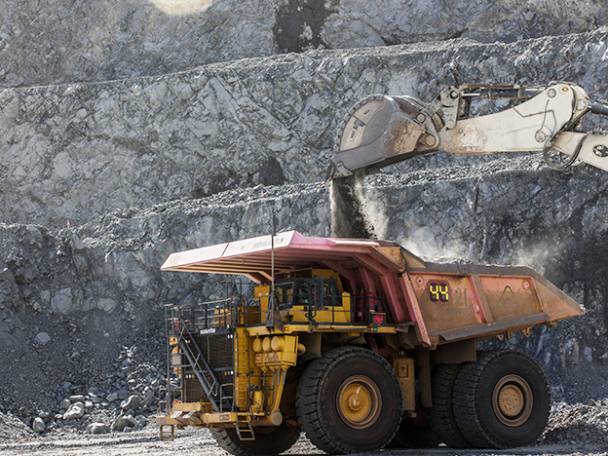- Weaker metals prices knocked billions off earnings for the year
- Final dividend smaller than the interim payout at 225¢, or $3.7bn
Rio Tinto (RIO) has moved more aggressively than peers in targeting growth over shareholder returns, cutting its dividend by half for the 2022 financial year. The company’s payout ratio dropped from 79 per cent of earnings last year to 60 per cent.
This came as earnings tumbled from lower metals prices and higher costs. Adjusted Ebitda came in at $26bn (£22bn), 30 per cent down on 2021, while underlying earnings fell 38 per cent to $13bn.
This flowed through to a lower dividend total of $8bn. Unlike BHP (BHP), which is more confident in a quick recovery to metals prices and cost rises already peaking, Rio Tinto said it would focus on reinvesting in its business, setting up investors for lower payouts even if conditions improve.
“We’re now seeing a modest shift to compelling growth,” said chief executive Jakob Stausholm, who added there had been “green shoots” in metals markets after China’s reopening and likely increased real estate and infrastructure spending. The company has set a target of $3bn in growth spending a year, up from the $2bn expected in 2023.
Last year, Rio Tinto spent $3.1bn on buying out minority shareholders in Turquoise Hill Resources, which owns two-thirds of the Oyu Tolgoi copper mine in Mongolia. It also spent $825mn on the Rincon lithium mine in Argentina, which is some years from production.
The next big spending candidate is the Simandou iron ore project in Guinea, which is progressing slowly after years of development drama. The miner is currently negotiating an investment framework with the country’s government. On top of an iron ore mine itself, the project needs rail and port infrastructure to begin exports, so this could end up costing Rio Tinto and its partners tens of billions of dollars.
Iron ore dominates the company’s earnings, providing around 70 per cent of cash profits, and the second half saw a significant hit from the cost/price double whammy. The cash profit margin slipped from 76 per cent to 68 per cent, with the larger decline in the second half. Production was consistent, however, and the company hit a record level of output in the December quarter as the Gudai-Darri mine ramped up.
The aluminium and copper divisions both saw 9 and 10 percentage point falls in Ebitda margin, coming in at 29 per cent and 49 per cent, respectively.
Analysts see consistent cash profits for the next few years despite the global volatility – the consensus forecast for 2023 and 2024 is around $23.5bn, down from $26bn in 2022. Free cash will take more of a hit as capex rises, so shareholders will be dependent on the board potentially going back above the 60 per cent of underlying earnings payout policy to see rises in this area.
In the seven years since bringing in its distribution policy (officially 40 - 60 per cent of underlying earnings), the company has only ever paid out 60 per cent or more, so future payments at or above this level are not out of the question. But the company will have to avoid major cost increases and capital project surprises. Hold.
Last IC View: Hold, 6,148p, 17 Jan 2023
| RIO TINTO (RIO) | ||||
| ORD PRICE: | 6,061p | MARKET VALUE: | £98bn | |
| TOUCH: | 6,059-6,062p | 12-MONTH HIGH: | 6,406p | LOW: 4,424p |
| DIVIDEND YIELD: | 6.8% | PE RATIO: | 9 | |
| NET ASSET VALUE: | 3,097ȼ | NET DEBT: | 8% | |
| Year to 31 Dec | Turnover ($bn) | Pre-tax profit ($bn) | Earnings per share (ȼ) | Dividend per share (ȼ)* |
| 2018 | 40.5 | 18.2 | 793 | 307 |
| 2019 | 43.2 | 11.1 | 491 | 382 |
| 2020 | 44.6 | 15.4 | 604 | 464 |
| 2021 | 63.5 | 30.8 | 1303 | 793 |
| 2022 | 55.6 | 18.7 | 767 | 492 |
| % change | -12 | -39 | -41 | -38 |
| Ex-div: | 09 Mar | |||
| Payment: | 20 Apr | |||
| £1=$1.20 *Excludes special dividends of 93ȼ for 2020 and 247ȼ for 2021 | ||||









